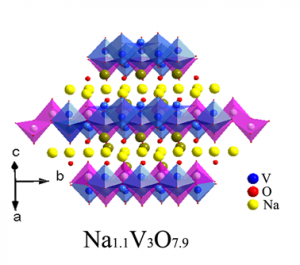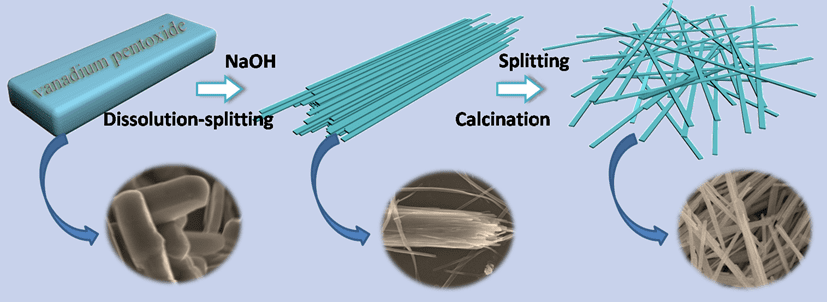 The large-scale storage of renewable energy by means of rechargeable batteries has been a key issue for the last years. Besides the well-established Li-ion batteries, Na-ion batteries (NIBs) are recently in the focus of interest because sodium is abundant on earth and therefore, a cheaper alternative to lithium. One major challenge is, however, that Na ions are too large to replace lithium which limits the number of potential cathode materials with satisfying performances for NIBs.
The large-scale storage of renewable energy by means of rechargeable batteries has been a key issue for the last years. Besides the well-established Li-ion batteries, Na-ion batteries (NIBs) are recently in the focus of interest because sodium is abundant on earth and therefore, a cheaper alternative to lithium. One major challenge is, however, that Na ions are too large to replace lithium which limits the number of potential cathode materials with satisfying performances for NIBs.
X.-B. Zhang and co-workers develop a facile and low temperature synthetic strategy for pure single crystalline Na1.1V3O7.9 nanobelts (NVONBs) for use in Na-ion batteries. The synthesis is based on vanadium pentoxide (V2O5) and sodium hydroxide (NaOH) solution as vanadium and sodium precursors, respectively. The preparation procedure includes the intercalation of sodium ions into layers of bulk V2O5 to form Na2V6O16. Nanobelts are generated via partial dissolution of interlayers from the bulk crystal. Finally, the obtained Na2V6O16 nanobelts are dried and calcinated in air to give NVONBs.
When used as electrode material in NIBs, NVONBs achieve excellent results. One reason for this is certainly the layered structure of the nanobelts that supports Na+ insertion and extraction. Moreover, the absence of defects and grain boundaries in the single crystals facilitates Na-ion diffusion during the electrochemical reaction. Therefore, the obtained electrochemical performances of NVONB based Na-ion batteries reveal superior capacities up to 173 mAh g-1, good cycling stabilities over 190 cycles, and good rate capabilities. Overall, NVONBs have proved to be particularly suitable for the use as a superior cathode material in NIB applications for efficient large-scale electric energy storage applications.
Advanced Science is a new journal from the team behind Advanced Materials, Advanced Functional Materials, and Small. The journal is fully Open Access and is free to read now at www.advancedscience.com.

















